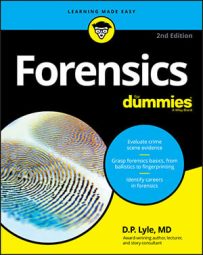Regardless of whether the first officer to arrive at a crime scene found out about the crime via a phone call to the station, a radio call from a dispatcher, or directly from a concerned person, the officer must make every effort to detain the person who initially reported the crime and not allow that individual access to the crime scene.
Anyone who reports a crime may have witnessed the incident or may have seen or heard something suspicious.
However, because the officer has no way of knowing whether the person reporting the crime is a witness or a suspect, allowing the informant access to the crime scene can mean losing or contaminating the evidence. After all, a perpetrator may
Believe that reporting the crime makes him less likely to be a suspect
Attempt to destroy or remove evidence
Neither of these situations is uncommon, so the officer who arrives first needs to approach the crime scene in a logical and organized manner, protecting the evidence and other people who may be there. Otherwise, harm may come to the officer, fellow officers, victims, witnesses, suspects, and even the perpetrator, or evidence may be damaged or destroyed.
The officer who responds first must make personal safety a primary concern and ensure that the perpetrator or perpetrators no longer are present or a threat. Whenever a perpetrator is present, the officer arrests and secures that person. Thereafter, the officer assists any victims who are present, offers first aid as needed, and mobilizes emergency medical services. After these important tasks are completed, the officer begins preserving the crime scene.
Additionally, the officer may need to detain suspects and witnesses and keep them separate to avoid collusion, meaning that the detainees work together to create a story to tell police. However, at this stage, the officer may not know who is who: A witness may become a suspect, and a suspect may actually be a useful witness. Furthermore, the officer may have no reason or legal right to detain some witnesses and thus must obtain accurate identification and contact information from each person who leaves the area.
At the heart of crime-scene protection is the principle of exchange. Locard's Exchange Principle states that when any two people come in contact with each other, they exchange or transfer trace materials, such as hair, fibers, and prints. Every person who enters the crime scene can leave behind evidence of his presence; take away crucial trace evidence on his shoes, clothes, or hands; or otherwise damage or alter any evidence that remains. Thus, access to the scene must be restricted immediately and denied to all witnesses and suspects.

